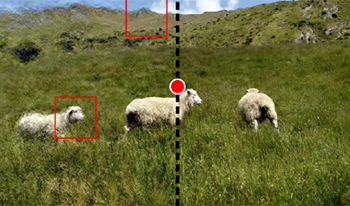
_x005F_x000D_ Inventing immersive displays that can attain realism in visuals is a long standing quest in the optics, graphics and perception fields. As holographic displays can simultaneously address various depth levels, experts from industry and academia often pitch these holographic displays as the next-generation display technology that could lead to such realism in visuals. However, holographic displays demand high computational complexity in image generation pipelines and suffer from visual quality-related issues. _x005F_x000D_ _x005F_x000D_ This talk will describe our research efforts to combine visual perception related findings with Computer-Generated Holography (CGH) to achieve realism in visuals and derive CGH pipelines that can run at interactive rates ( above 30 Hz). Specifically, I will explain how holographic displays could effectively generate three-dimensional images with good image quality and how these images could be generated to match the needs of human visual perception in resolution and statistics. Furthermore, I will demonstrate our CGH methods running at interactive rates with the help of learning strategies. As a result, we provide a glimpse into a potentialfuture where CGH helps to replace twodimensional images generated on today's displays with authentic three-dimensional visuals that are perceptually realistic.
Kaan Akşit, "Perceptually Guided Computer-generated Holography" in London Imaging Meeting, 2022, pp 41 - 43, https://doi.org/10.2352/lim.2022.1.1.10
 Find this author on Google Scholar
Find this author on Google Scholar Find this author on PubMed
Find this author on PubMed